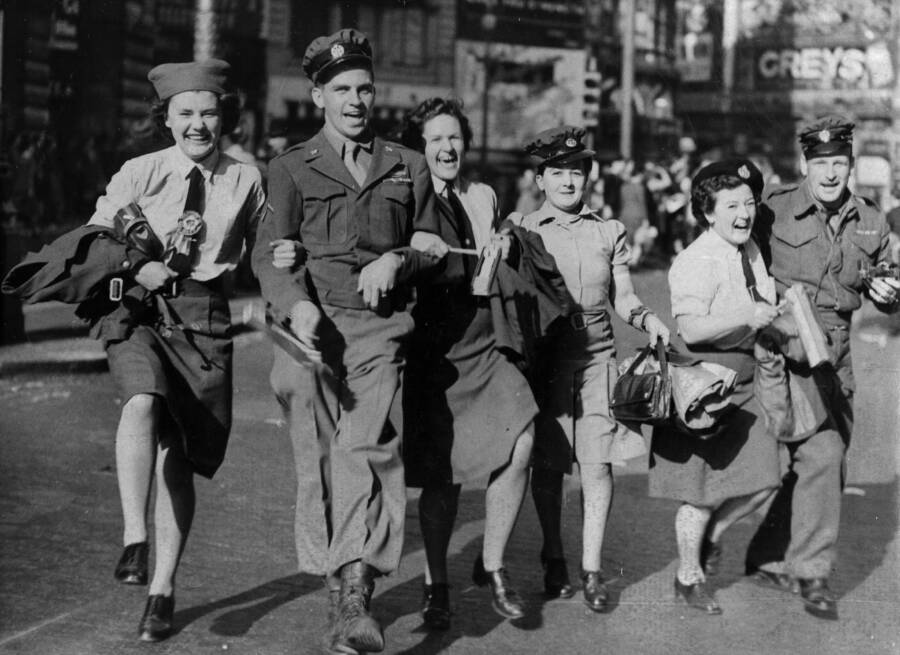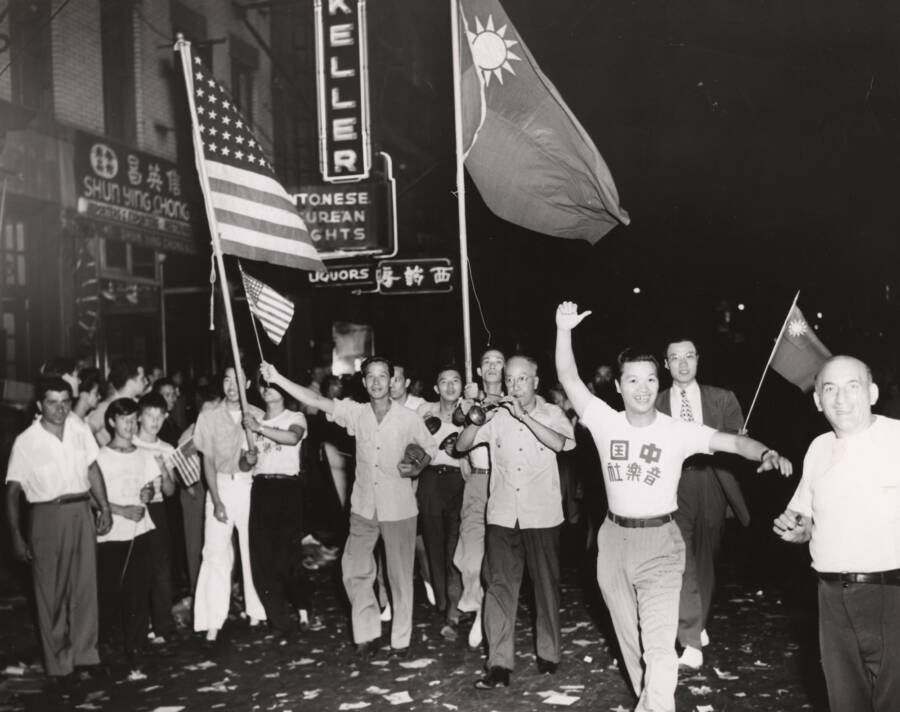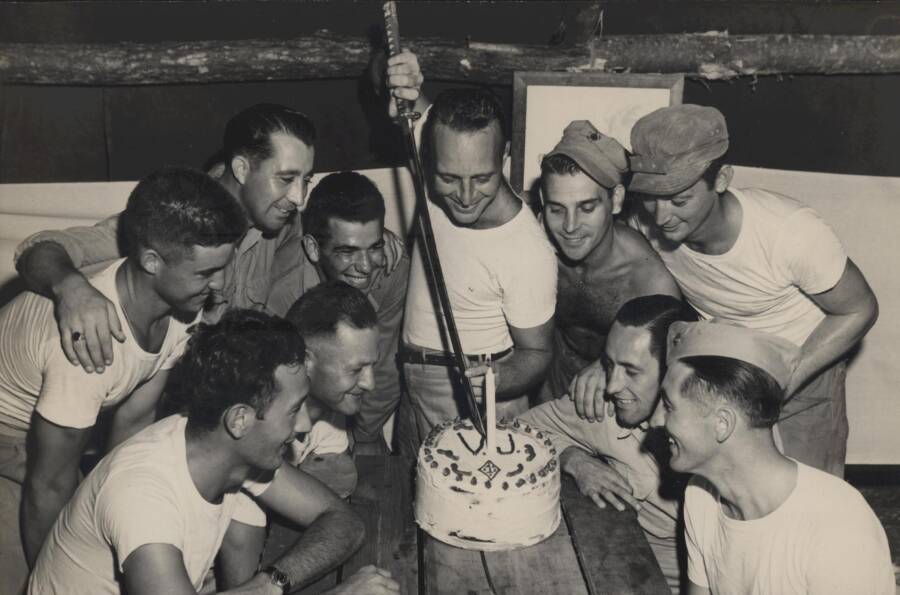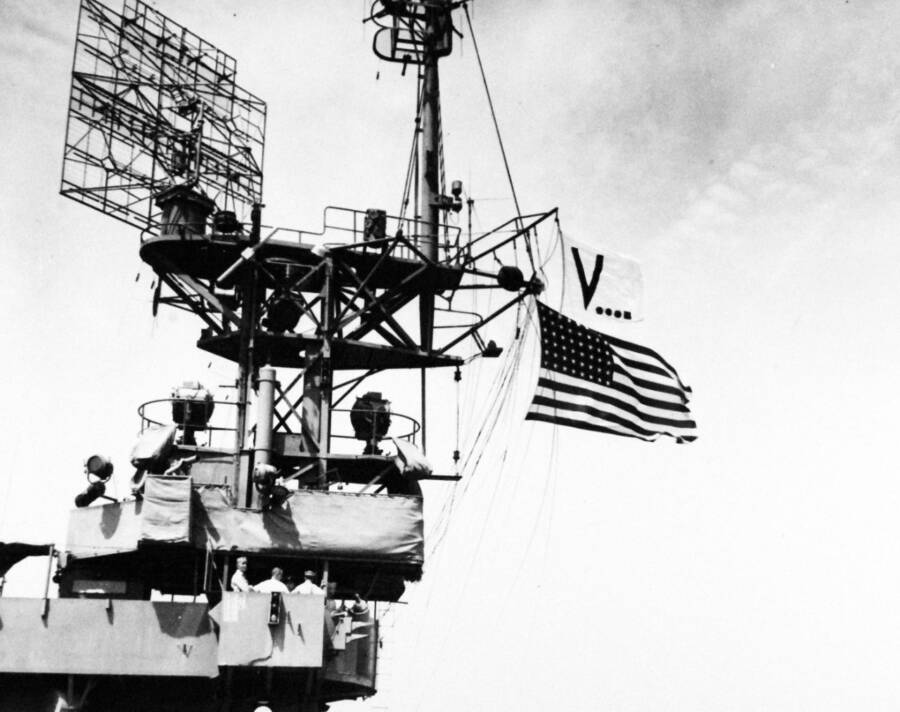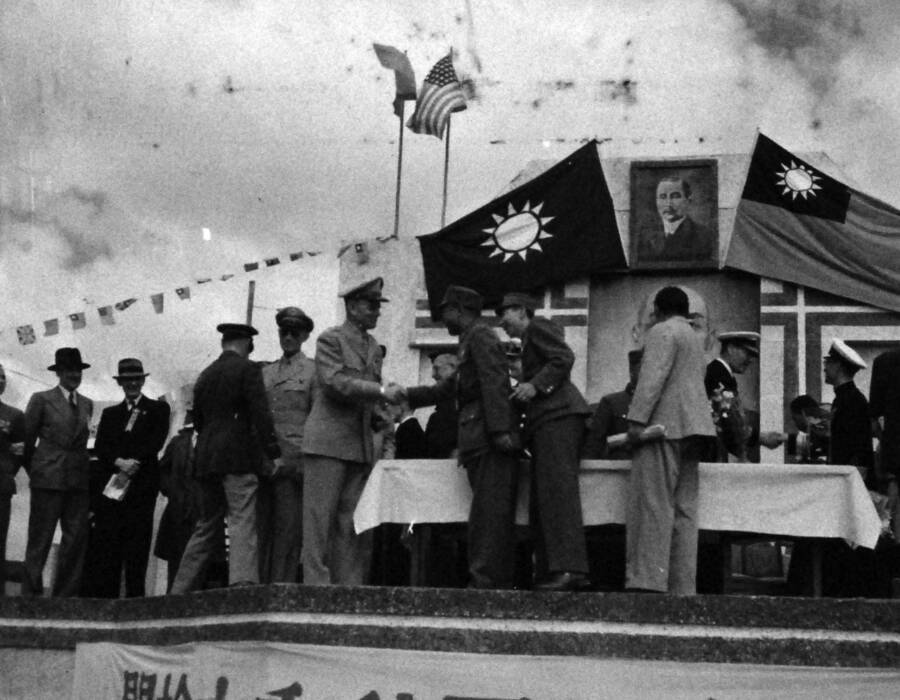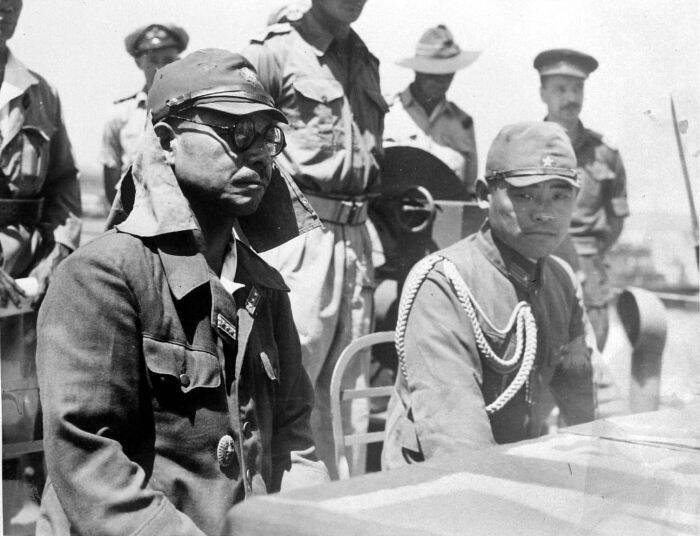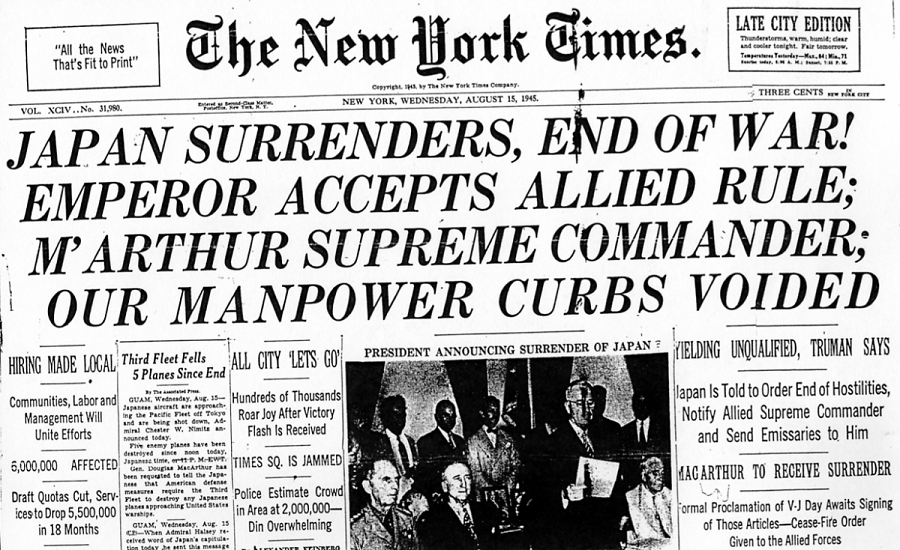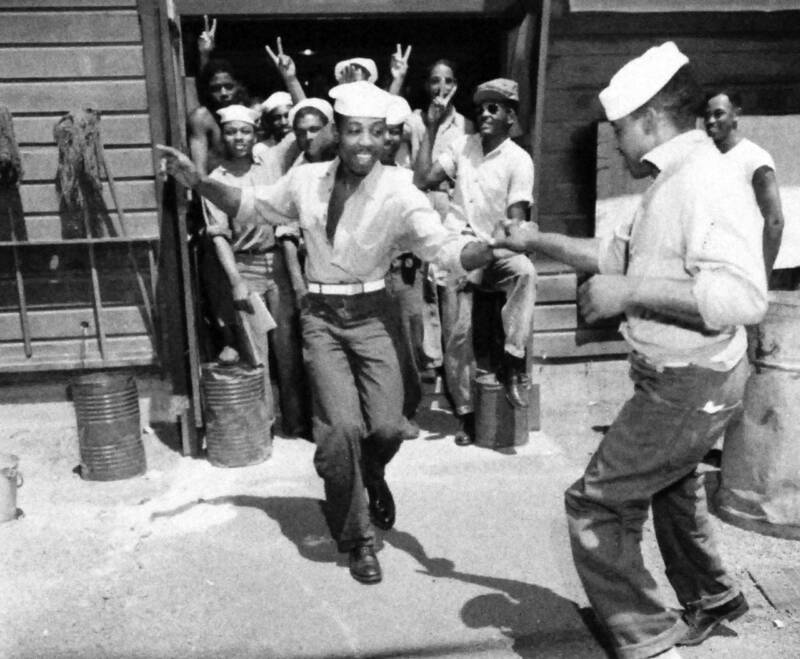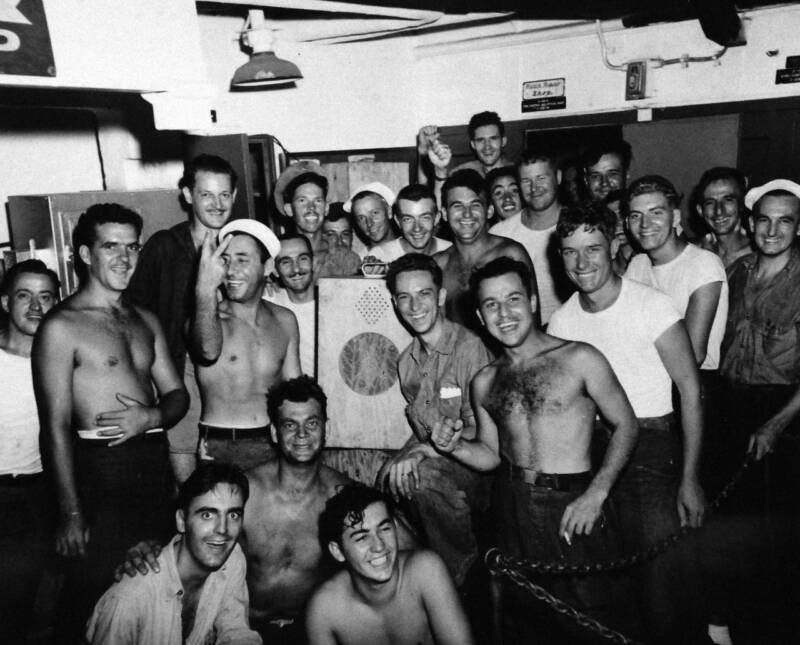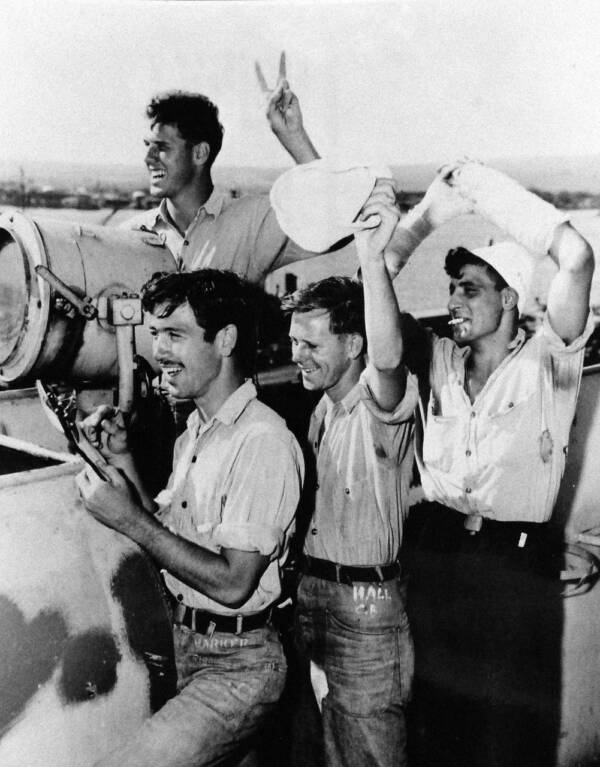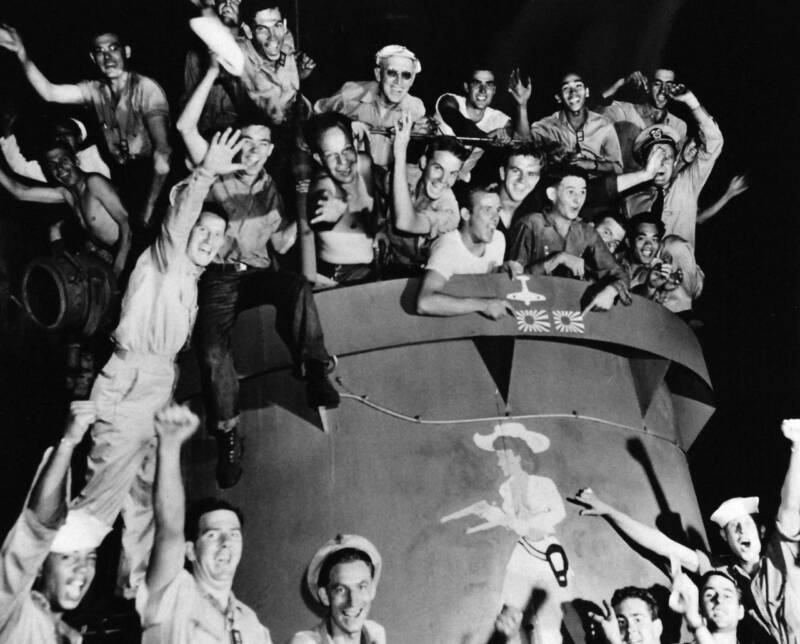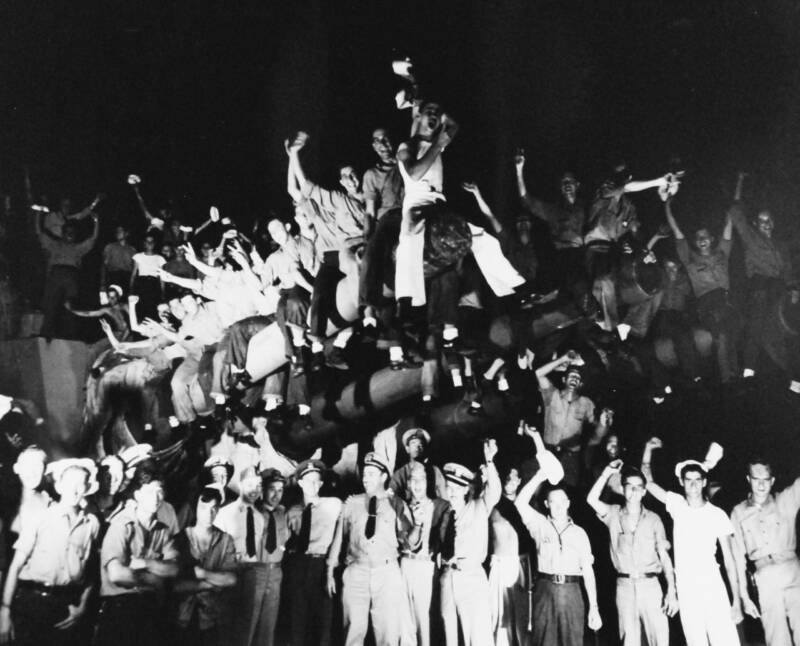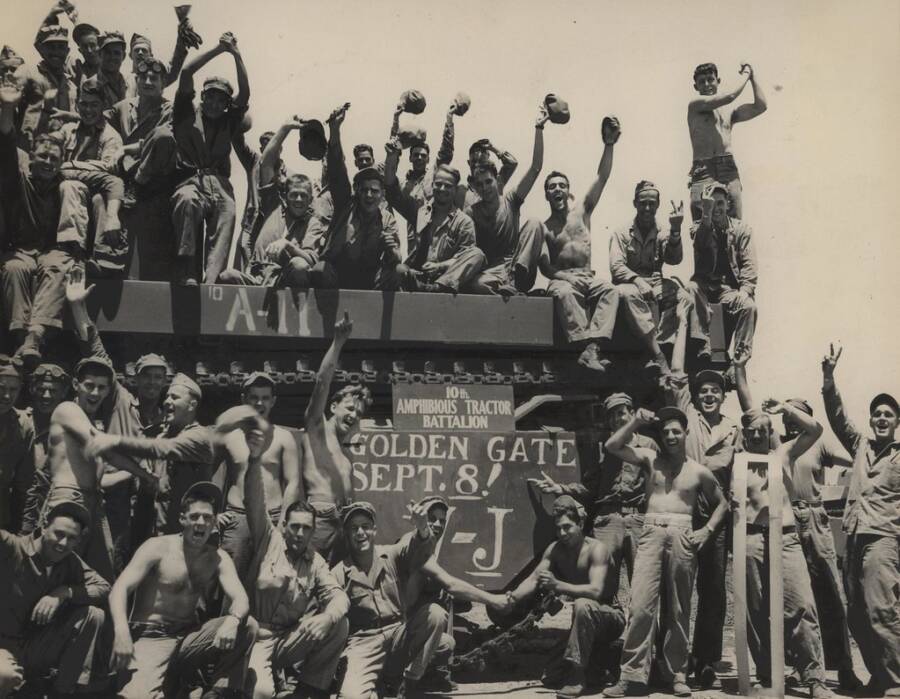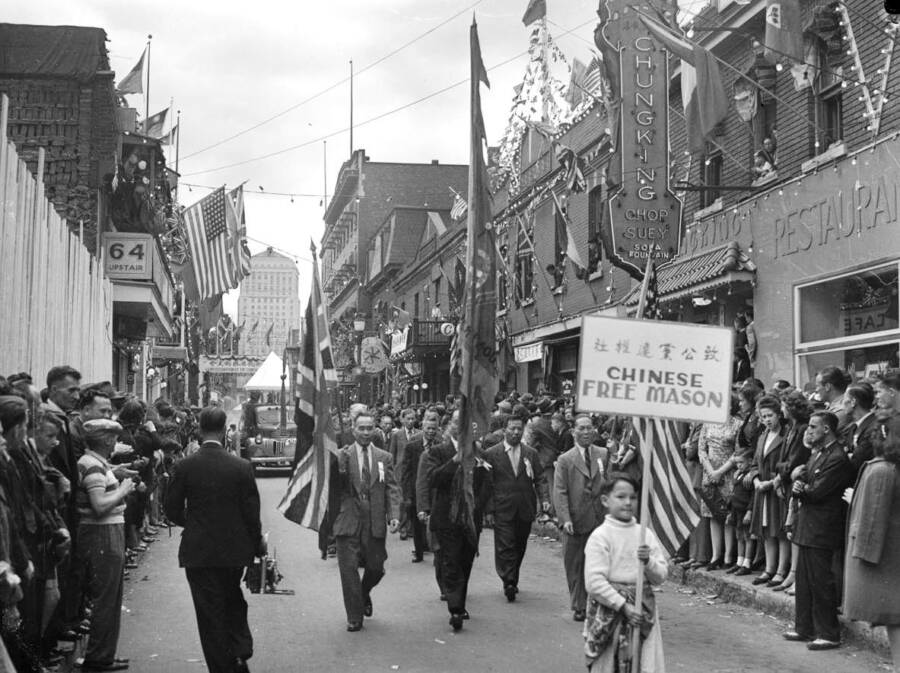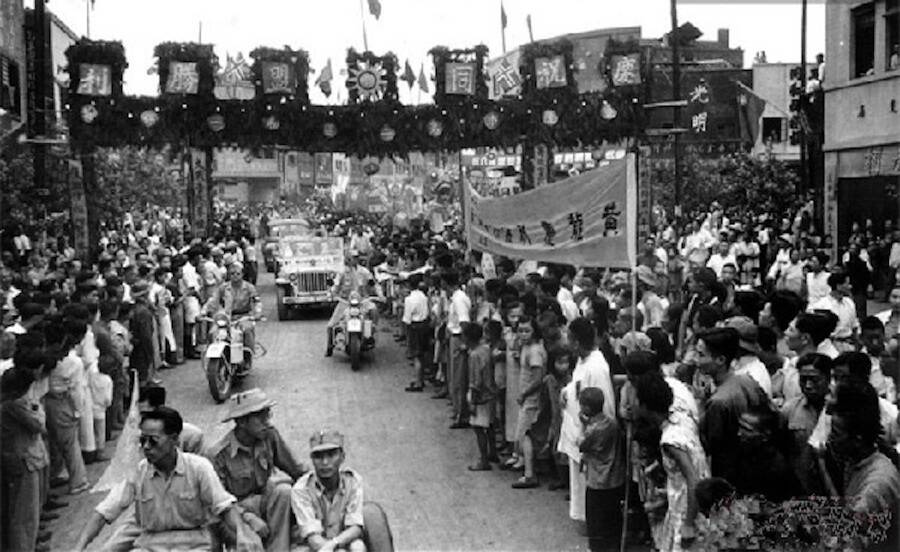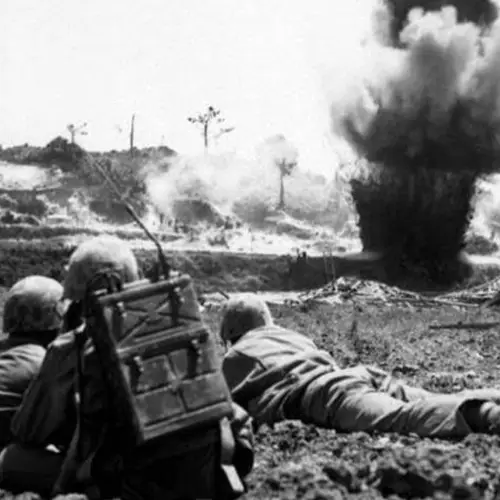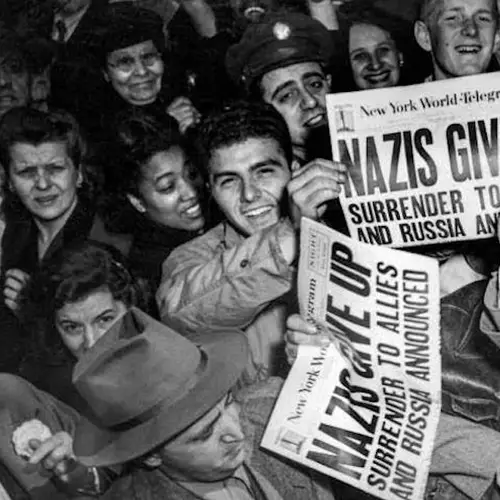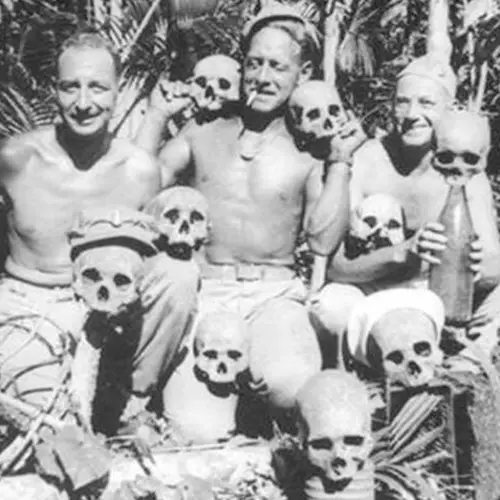Whether it was celebrations in Shanghai or riots in San Francisco, Victory Over Japan Day sent people around the world into a frenzy.
Today commemorations of V-J Day are tempered by somber remembrances of the lives lost in the atomic bombings of Hiroshima and Nagasaki. However, on August 14, 1945, when news broke of Japan's surrender to Allied forces, spontaneous celebrations broke out around the world.
After all, Japan's surrender marked the end of World War II, the bloodiest battle the world had ever seen. Some 65 million people around the world died as a result of the conflict, and millions more suffered injuries, hunger, fear, and grief.
These incredible historic photos show jubilation and relief around the world, from Times Square to Shanghai, as soldiers and civilians alike celebrated the end of the war. However, some V-J Day celebrations took a violent turn.
And the bloody journey to get to these scenes of ecstatic revelry took a terrible toll on people around the world.
The Road To Victory Over Japan
In the beginning, Japan's own devastating attack on Pearl Harbor in December 1941 led the U.S. to declare war and join the Allies. Relations between Japan and the U.S. had been deteriorating for years before the bombings of the Pearl Harbor naval base turned them violent.
Once America officially declared war on Japan, Nazi Germany declared war on the U.S. — as the Tripartite Pact agreement demanded.
This led to an enormous escalation in the European Theater, as American troops pushed into the continent and Nazi Germany was forced to fight on two fronts. Over the next three years, the Allies — technologically and productively superior to Japan — fought a rather one-sided war in the Pacific.
Though Victory in Europe Day (V-E Day) arrived on May 8, 1945, and the Nazis had formally accepted defeat, Allied celebrations were hampered as the war still raged on in the East. To tighten the noose and force capitulation, the U.S. began ramping up bombardments of Japan.
Between March and July of 1945, Allied forces dropped an estimated 100,000 tons of bombs on over 60 Japanese towns and cities from the air and sea. On July 26, Allied leaders called on Japan's surrender by issuing the Potsdam Declaration.
The document promised Japan's people a peaceful government should its leaders agree to capitulate — and "prompt and utter destruction" if they refused. On Aug. 6, after the Tokyo-based officials opted for the latter, America's B-29 Enola Gay plane dropped an atomic bomb on Hiroshima.
Five square miles of the city flattened, causing 90,000 to 146,000 casualties. Two days later, Soviet troops invaded Japanese occupied territory in Manchuria, forcing Japan to fight the war on two fronts.
On Aug. 9, America dropped another atomic bomb on Nagasaki, killing between 39,000 and 80,000 people. The untold mass death visited upon Japan ultimately led Emperor Hirohito to address the nation on Aug. 14, 1945.
Victory Over Japan Day
Emperor Hirohito's historic radio address heard him urge his people to surrender. He explained it was America's use of a "new and most cruel bomb" that left him and the military no further options.
"Should we continue to fight, it would not only result in the ultimate collapse and obliteration of the Japanese nation but would also lead to the total extinction of human civilization," he said.
On the American side, President Harry S. Truman declared, "This is the day we have been waiting for since Pearl Harbor. This is the day when Fascism finally dies, as we always knew it would."
The Japanese government issued a statement accepting the Potsdam Declaration terms in the early afternoon of Aug. 15. As a result of timezone differences, the President's press conference at the White House fell on the day before — explaining why V-J Day is celebrated in the U.S. on Aug. 14 while the U.K. commemorates it on Aug. 15.
After these announcements, V-J Day celebrations swept the world. From the United States to Europe, Allied forces and everyone else impacted by the horrors of WWII breathed indescribable sighs of relief. A 1945 examination chronicled the moment in time as follows:
"Booze flowed; inhibitions were cast off; there were probably as many fists thrown as kisses planted: in other words, once the inconceivable had actually been confirmed and it was clear that the century's deadliest, most devastating war was finally over, Americans who for years had become accustomed to almost ceaseless news of death and loss were not quite ready for a somber, restrained reaction to the surrender. That response would come, of course. In time, there would be a more considered, reflective take on the war and on the enemies America had fought so brutally, and at such cost, for so long.
However, some celebrations devolved into violence. In San Francisco, V-J Day festivities turned into a riot as thousands of Navy men took to the streets, injuring 1,000 people, killing 13, and raping six known victims.
Yet despite all the action in the streets around the world, Japan's official surrender had yet to be formally signed.
Japan's Official Surrender
V-J Day is commemorated again on Sept. 2, which marks the day of Japan's formal surrender in 1945. Japan signed legally binding documents on that date aboard the USS Missouri in Tokyo Bay.
Allied supreme commander General Douglas MacArthur, Japanese foreign minister Mamoru Shigemitsu, and chief of staff of the Japanese army Yoshijiro Umezu met on the U.S. warship to jointly sign the papers.
As both the United States and the United Kingdom made enormous sacrifices and lost staggering amounts of men, women, and children during the war — each of the three dates connoting victory over Japan are recognized.
WWII saw an estimated 65 million people across the globe perish, with over 400,000 Americans and 71,000 British soldiers falling in battle.
"It was too much death to contemplate, too much savagery and suffering," wrote historian Donald L. Miller. "And in August 1945 no one was counting. For those who had seen the face of battle and been in the camps and under the bombs — and had lived — there was a sense of immense relief."
The historic dates in August and September came as bittersweet relief, with U.K. Prime Minister Clement Attlee announcing two days of national holidays. In the U.S., Sept.2 is most commonly used as America's date of commemoration.
Modern Commemorations Of V-J Day
Due to the treatment of Japanese Americans in the 20th century and the horrors of WWII, many V-J Day celebrations have fallen by the wayside since the 1940s. From the internment of citizens to the nuclear devastation of Japan, celebrating victory over Japan seemed crass.
Nonetheless, the historic moment is still recognized by the U.S., albeit with a more somber tone than the celebrations of 1945. In 1995, President Bill Clinton and his administration celebrated the 50th anniversary of the end of WWII by referring to the date as the "End of the Pacific War" rather than V-J Day.
As for the iconic Eisenstaedt kiss photo, the image garnered renewed attention as the identities of the two figures were confirmed. Some argued that the kiss depicted sexual assault, as 21-year-old dental assistant Greta Zimmer Friedman revealed that she hadn't agreed to sailor George Mendosa's advance.
"It wasn't that much of a kiss," she said in 2005. "It was just somebody celebrating. It wasn't a romantic event."
In the end, Allied forces and citizens alike were grateful the war had ended. Unfortunately, a new conflict called the Cold War loomed — which would last for the next several decades.
After taking a look at 33 vintage photos from the day American victory over Japan was declared during WWII, read 31 interesting WWII facts. Then, learn about the worst U.S. war crimes committed during WWII.
